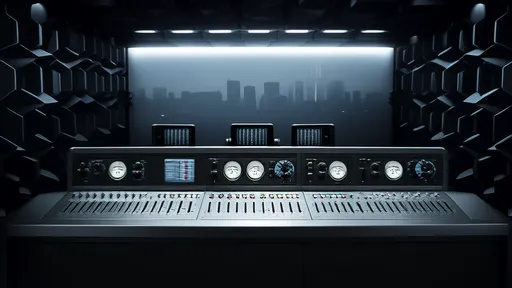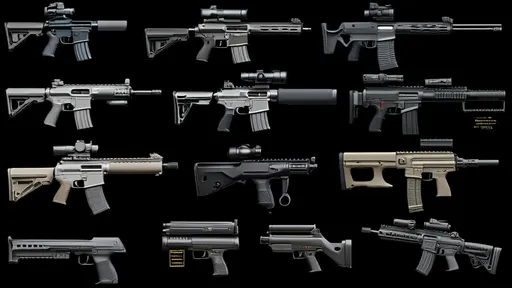The world of sound design for games and films has evolved dramatically over the past decade, with weapon sound effects standing at the forefront of this transformation. A well-crafted weapon sound library is no longer just a collection of gunshots and explosions—it’s an intricate tapestry of layered recordings, synthesized elements, and dynamic processing that brings virtual arsenals to life. From the metallic clink of a reloading bolt to the visceral thump of a distant mortar, these sounds shape player immersion and cinematic intensity in ways that visuals alone cannot achieve.
The Anatomy of a Weapon Sound Library
Creating a high-quality weapon sound library begins with field recordings. Sound designers often travel to firing ranges, military bases, or even collaborate with firearms experts to capture the raw, unfiltered sounds of real weapons. Each firearm has a distinct sonic signature—the sharp crack of a sniper rifle differs vastly from the rapid staccato of a submachine gun. But realism alone isn’t enough. Modern libraries blend these recordings with synthetic layers, using granular synthesis or frequency modulation to enhance the low-end punch or add harmonic complexity that microphones might miss.
Post-processing plays an equally critical role. Dynamic range compression ensures that sounds sit well in a mix without overwhelming other audio elements, while convolution reverb places gunshots in believable acoustic spaces—whether it’s the tight echo of an urban alley or the open decay of a desert canyon. Some designers even incorporate unconventional sources, like slamming car doors or breaking glass, to create hybrid sounds that feel familiar yet uniquely impactful.
The Challenges of Authenticity and Creativity
One of the biggest challenges in weapon sound design is balancing authenticity with creative exaggeration. Real-world firearms can sound surprisingly underwhelming when recorded raw, especially in the context of a high-energy game or film. To compensate, designers often layer multiple takes, pitch-shift certain elements, or emphasize mechanical details like shell casings hitting the ground. The goal isn’t strict realism but emotional realism—a sound that feels believable while delivering the adrenaline rush the scene demands.
Another hurdle is variety. A single weapon might need dozens of variations to avoid repetition during gameplay. This includes different firing modes (single shot, burst, full auto), reload sequences, and even subtle handling noises like the click of a safety switch. Advanced libraries now incorporate procedural systems that randomize these elements in real-time, ensuring no two gunshots ever sound identical.
Technological Advancements and Future Trends
The rise of spatial audio technologies like Dolby Atmos and Sony’s 360 Reality Audio has pushed weapon sound design into new dimensions. Designers now think beyond stereo panning, considering verticality and distance cues to create fully immersive combat environments. A bullet whizzing past the player’s ear or an explosion rumbling beneath their feet can now be rendered with startling precision.
Machine learning is also making inroads. Some studios are experimenting with AI-driven tools that can generate context-aware weapon sounds on the fly, adapting to factors like weather conditions or surrounding architecture. Meanwhile, modular libraries are becoming more popular, allowing sound designers to mix and match components to build custom firearms for fictional settings—think sci-fi blasters or steampunk cannons.
As the demand for hyper-realistic or stylized weapon sounds grows, so does the appreciation for the craft behind them. What was once an afterthought in production pipelines is now recognized as a cornerstone of interactive and cinematic storytelling. The next time you duck behind cover in a firefight or feel your seat shake during an on-screen battle, remember: those sounds are the result of countless hours of recording, tweaking, and innovating—a symphony of violence meticulously composed to thrill your senses.

By /Aug 15, 2025

By /Aug 15, 2025

By /Aug 15, 2025

By /Aug 15, 2025

By /Aug 15, 2025

By /Aug 15, 2025

By /Aug 15, 2025

By /Aug 15, 2025

By /Aug 15, 2025

By /Aug 15, 2025

By /Aug 15, 2025

By /Aug 15, 2025

By /Aug 15, 2025

By /Aug 15, 2025

By /Aug 15, 2025

By /Aug 15, 2025

By /Aug 15, 2025

By /Aug 15, 2025

By /Aug 15, 2025

By /Aug 15, 2025